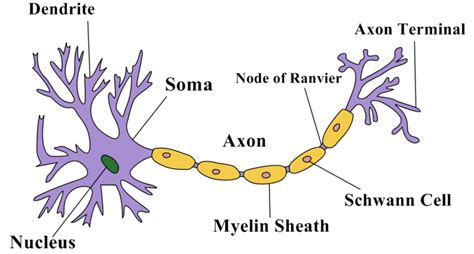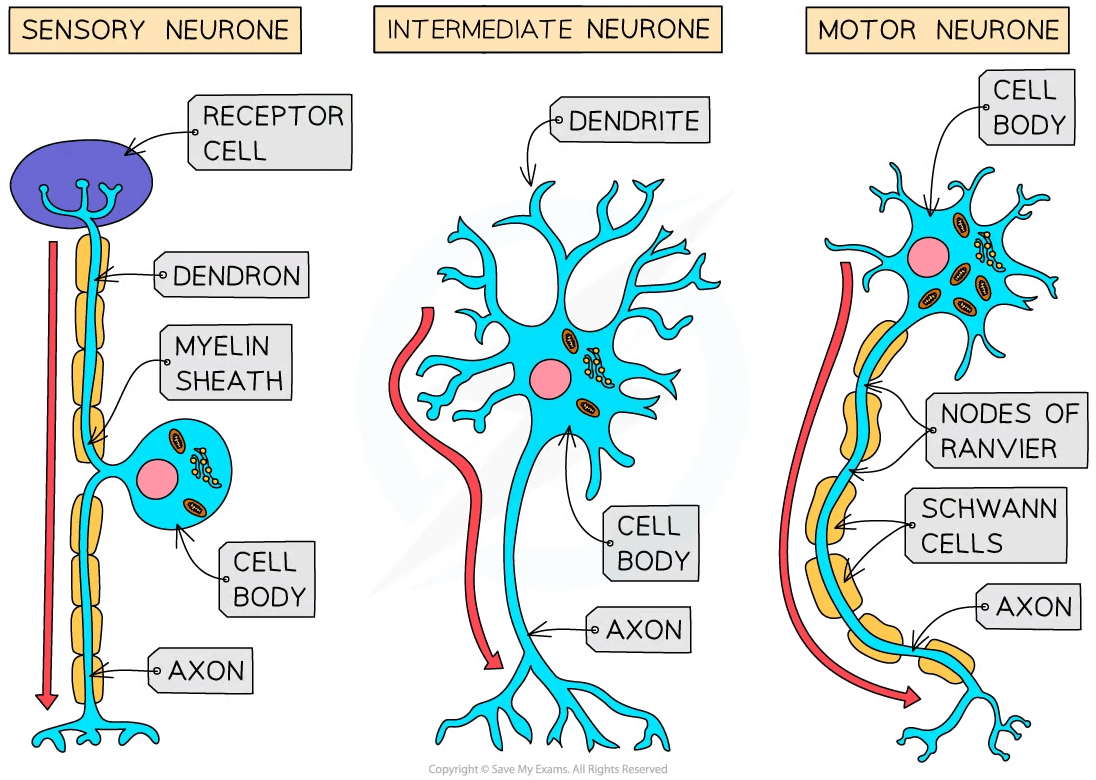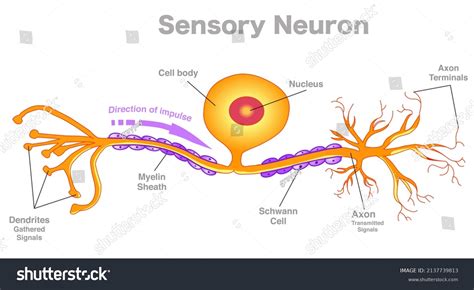Structures Of Neuron

Neurons, often referred to as nerve cells, are the fundamental units of the nervous system, playing a pivotal role in transmitting information throughout the body. Their unique structure and specialized functions make them integral to the complex network that governs our thoughts, actions, and perceptions. Understanding the intricacies of neuron structure is not just an academic pursuit but a gateway to unraveling the mysteries of the mind and its vast capabilities.
The Anatomy of a Neuron

The structure of a neuron is remarkably intricate and adapted to its specific function of transmitting electrical signals. At its most basic, a neuron comprises several key components, each with a distinct role in the neuron’s overall function.
Dendrites
Dendrites are tree-like extensions that branch out from the cell body or soma of the neuron. These structures are the primary receivers of information, acting as the neuron’s input system. They are covered in tiny protrusions called dendritic spines, which are the sites where most synaptic inputs occur. Each dendritic spine contains receptor molecules that respond to neurotransmitters released by other neurons, converting chemical signals into electrical signals.
| Dendrite Feature | Description |
|---|---|
| Dendritic Tree | The complex network of dendritic branches that extends from the soma. |
| Dendritic Spines | Small protrusions on the dendrites that receive neurotransmitter signals. |

Soma (Cell Body)
The soma, or cell body, is the central part of the neuron. It contains the nucleus, which houses the genetic material, and other organelles necessary for the neuron’s survival and function. The soma also plays a role in integrating the electrical signals received by the dendrites, determining whether the neuron will fire an action potential.
Axon
The axon is a long, slender projection that carries electrical signals away from the soma. It is covered in a protective layer called the myelin sheath, which acts as an insulator, enhancing the speed and efficiency of signal transmission. At regular intervals along the axon, there are gaps in the myelin sheath called nodes of Ranvier, which facilitate the rapid propagation of action potentials.
| Axon Feature | Description |
|---|---|
| Myelin Sheath | A fatty substance that wraps around the axon, speeding up signal transmission. |
| Nodes of Ranvier | Gaps in the myelin sheath where action potentials are regenerated, enhancing signal speed. |
Synapses
Synapses are the specialized connections between neurons where communication occurs. They are formed when the axon of one neuron meets the dendrites or soma of another, creating a junction where neurotransmitters can be released. Synapses can be either chemical (involving neurotransmitters) or electrical (allowing direct current flow between neurons), and their strength and efficiency can be modified, a process known as synaptic plasticity, which is crucial for learning and memory.
Neuron Types and Specializations

Neurons are not all identical; they come in various types, each with unique structural features and functions. This diversity allows for the complex and varied operations of the nervous system.
Sensory Neurons
Sensory neurons are specialized to receive and transmit sensory information from the periphery to the central nervous system. They have long dendrites that extend to the sensory receptors in the skin, eyes, ears, and other sensory organs, converting external stimuli into electrical signals that can be processed by the brain.
Motor Neurons
Motor neurons, on the other hand, carry signals from the central nervous system to the muscles and glands, causing physical actions or physiological changes. These neurons typically have a single, long axon that connects to many muscle fibers or gland cells, allowing for coordinated movements.
Interneurons
Interneurons, also known as local circuit neurons, are found in the central nervous system and are responsible for local connections and integration of information. They have shorter axons and often form dense networks, allowing for complex processing and coordination of signals within specific brain regions.
Conclusion: The Intricacies of Neuron Structure
The structure of neurons is a fascinating testament to the complexity and precision of the human body. From the intricate dendritic trees that receive signals to the long, insulated axons that transmit them, each component is finely tuned to perform its specific role. Understanding these structures and their functions provides a foundation for further exploration into the mysteries of the nervous system and its role in our daily lives.
Frequently Asked Questions
How do neurons communicate with each other?
+Neurons communicate via synapses, specialized connections where one neuron’s axon terminal meets another neuron’s dendrite or soma. Neurotransmitters released at these junctions transmit signals from one neuron to the next, allowing for the transmission of information throughout the nervous system.
What is the role of the myelin sheath in neuron function?
+The myelin sheath is a protective layer of fatty tissue that surrounds the axon of many neurons. It acts as an insulator, enhancing the speed and efficiency of signal transmission along the axon. The presence of the myelin sheath allows for rapid propagation of action potentials, enabling swift communication between neurons.
How does synaptic plasticity contribute to learning and memory?
+Synaptic plasticity refers to the ability of synapses to change in strength and efficiency based on neural activity. This process allows for the strengthening or weakening of connections between neurons, which is fundamental to learning and memory. By modifying synaptic connections, the brain can adapt to new information and experiences, facilitating the formation of memories and the acquisition of new skills.



